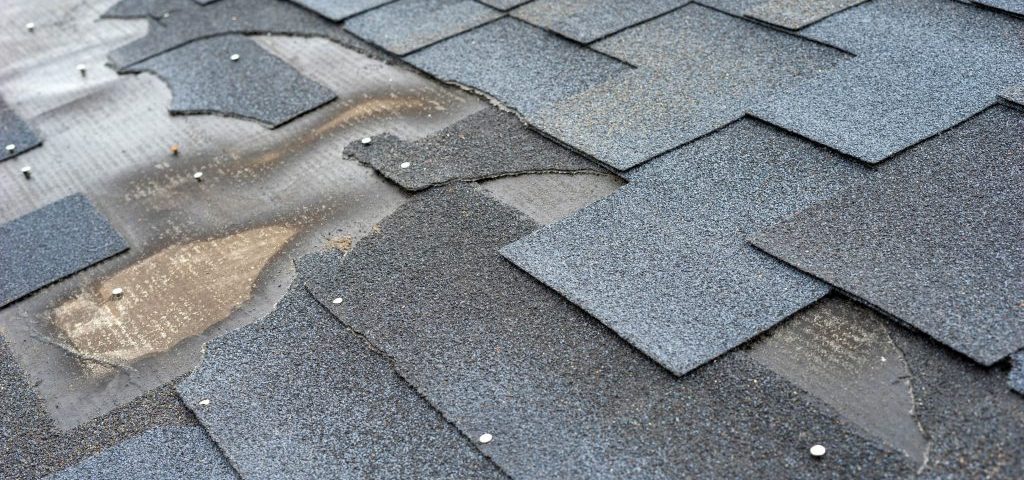- WE’RE HERE TO HELP | SE HABLA ESPAÑOL
- 800.586.5555
Finding Hidden Roof Damage After a Storm in Florida
Finding Hidden Roof Damage After a Storm in Florida

When most people see the iconic pictures of hurricane damage in news stories, it’s pretty obvious something cataclysmic happened. There are lots of broken things strewn all over or there is water covering cars and rising into homes and businesses.
The majority of hurricane storm damage isn’t like that. Those places are usually at the epicenter of landfall or directly impacted by storm surge or flooding. Exponentially more homes and businesses are just subjected to heavy winds and rain farther inland. Those winds are strong enough to cause significant damage to roofs, often in subtle ways that can be difficult to notice.
High enough wind speeds have a lifting effect on shingles. Shingles are nailed down and secured with asphalt to prevent this from happening, but when winds are strong enough the somewhat flimsy asphalt shingles can rip up and through the nails holding them down.
This can sometimes create a shingle flap – once the wind stops blowing it flaps back down into place. At first glance a roof may look completely normal. You wouldn’t realize the shingle had ripped through the nails or asphalt holding it down unless you actually go up on the roof and lift up on the lip of the shingle.
This type of damage isn’t always easily noticeable from the ground in tight spots around your roof, such as sections where your home may have multiple gables creating valleys.
A visual hallmark of this lifting effect are creases on the shingle. You may not notice these creases until you’re within four or five feet of the shingle, meaning they’re hard to spot from the ground. Shingles aren’t meant to be bent, but when half of the nails are ripped through, the wind that did it was likely strong enough to bend the shingle in a way that creates noticeable cracks or creases along the surface.
Those shingles have been compromised, even though the shingle is technically still in place, meaning leaks are inevitable. This type of damage does require, at a minimum, professional roof repair. In some cases, it may even justify replacement.
Homeowners filing a claim for this type of shingle damage need to work with a roofing contractor for documentation or have an insurance company claims adjuster inspect the damage. If an insurance company adjuster just glances at a roof with this type of shingle damage from the ground, they may assume there is no damage. The only way to know it happened is to gently lift the exposed edges of the shingle or examine them closely for cracking.
Shingle Adhesive Failure
Shingles shouldn’t have the lift to pull out fasteners if the adhesive sealant on the front half (downward slope) of a shingle is still intact. This sealant is heated by the sun’s rays every day and develops an even stronger bond in the weeks and months after installation. This sealant also won’t last forever, or it could have been defective when installed. Whether from age or a deficit in quality, shingles with compromised sealant are more prone to damage in high winds, like during a hurricane or tropical storm.
That being said, it’s possible for a shingle to reseal after wind has yanked it loose. You can spot this type of damage by finding shingles that are creased but resist being pulled up. That’s a sign that at one point the shingle did get lifted and bent but didn’t get pulled off all the way. It may or may not have a completely pulled fastener but either way it needs to be replaced.
If it’s obvious wind caused the roof damage and the roof is not at the end of its predicted lifespan, the insurance company should still cover the claim.
Getting a Professional Roofer to Help with Your Hurricane Roof Claim
There are a lot of great roofing contractors in Florida, but you should probably take a “trust but verify” approach when calling one out for an inspection. There are a small percentage of bad apples in the industry who will intentionally damage your roof while you’re not looking and tell you it was wind or hail. To be clear, these contractors are rare, but it can happen.
You should ideally be keeping an eye on your contractor and making sure they are spotting actual damage caused by weather or age and not damage they’re causing themselves.
What If the Insurance Company Won’t Cover the Claim?
Wind damage and hail damage tend to be pretty obvious thanks to the distinctive patterns of damage they cause. One of the few legitimate claim denial reasons will be the age of the roof. If your roof is at the end of its useful life, about 15 years or so, the insurance company won’t want to pay for a new roof that you’d have to pay for yourself anyways. If your roof is relatively new, they likely won’t fight you too much on the claim.
If they do – and you’ve gathered a lot of evidence suggesting wind was the source of your roof damage – consider contacting a public adjuster or a property damage attorney.
